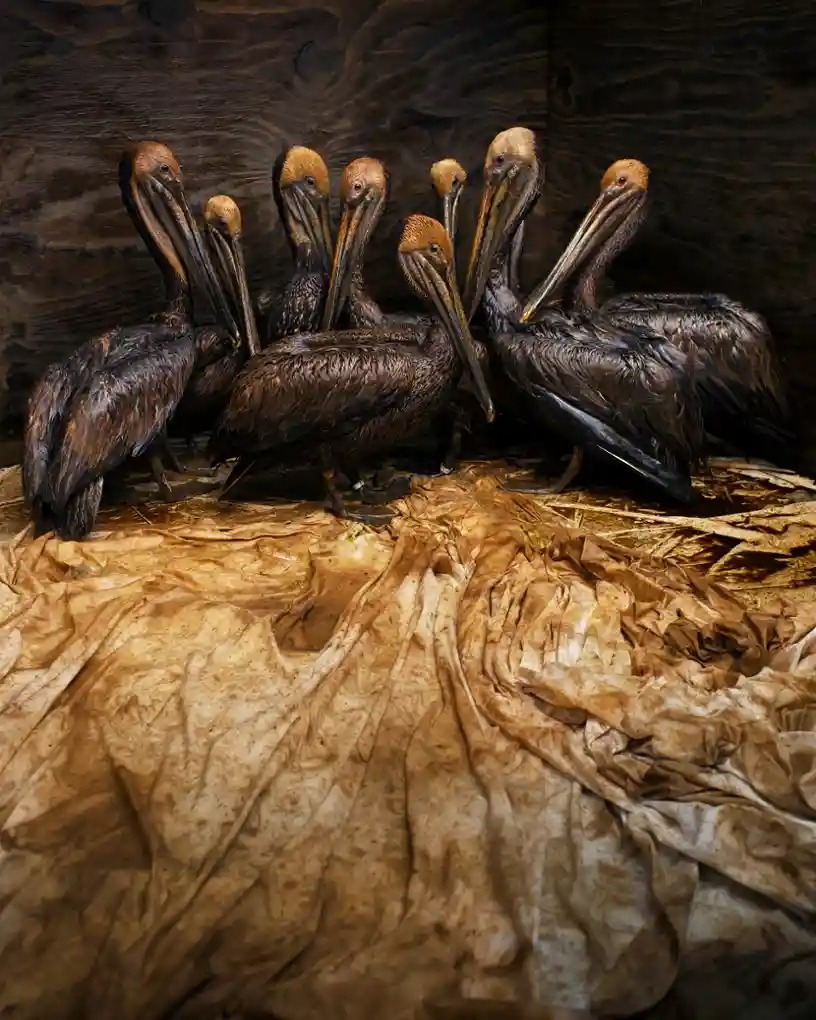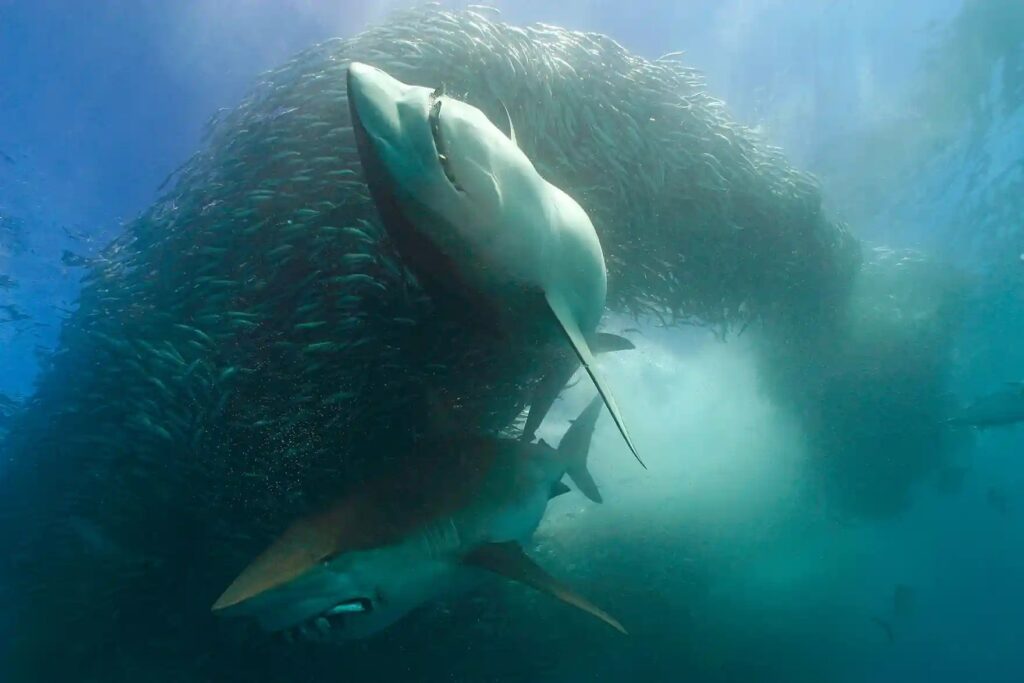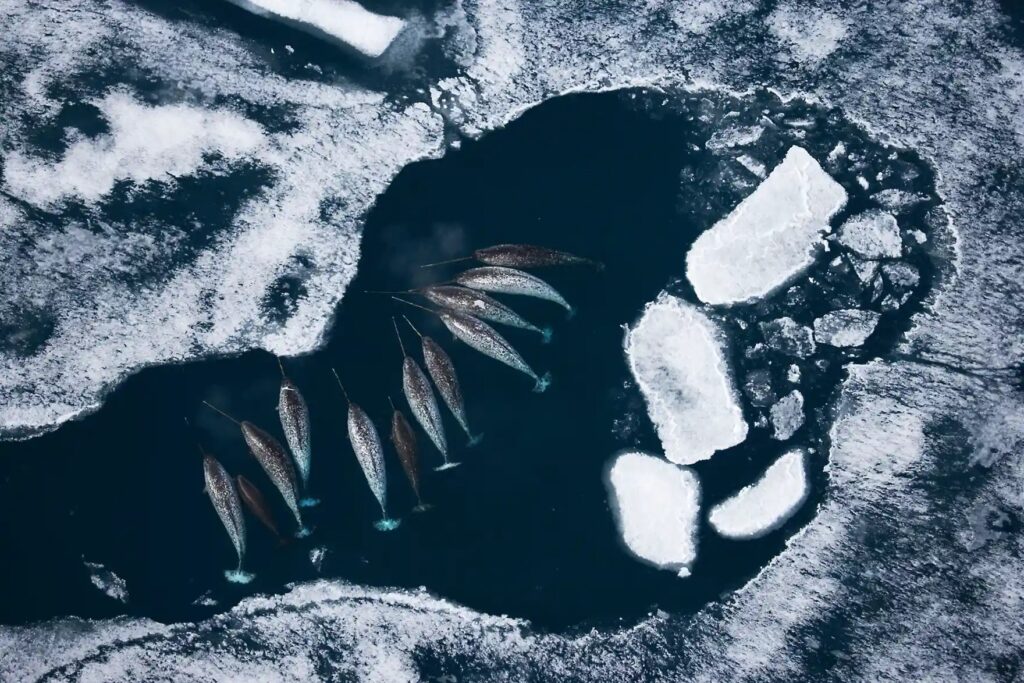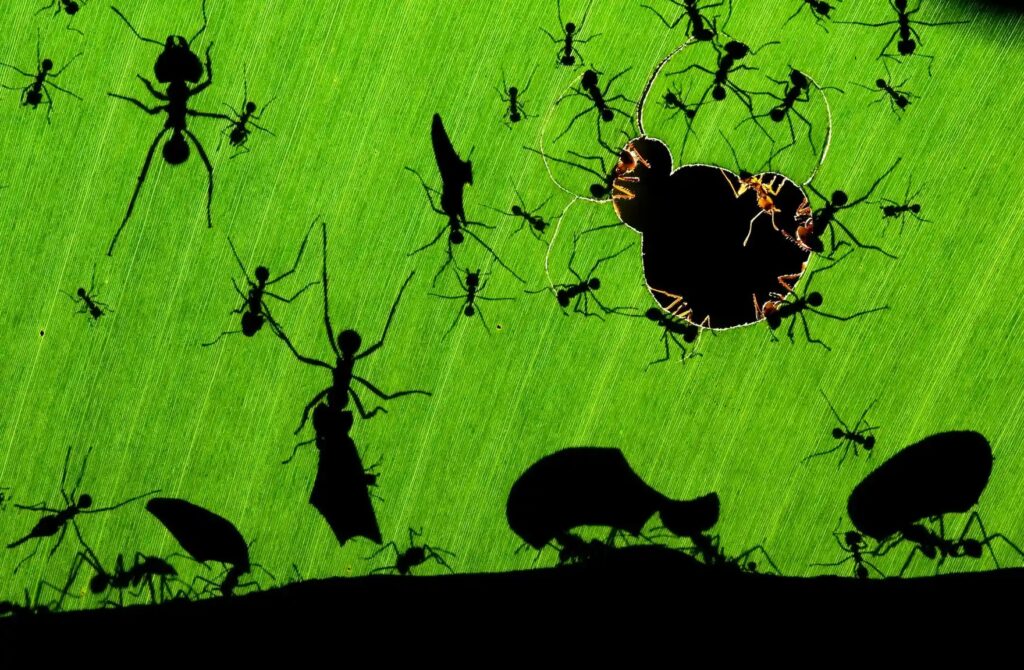
The Natural History Museum’s new book, issued on Wednesday, commemorates five decades of the Wildlife Photographer of the Year competition, which celebrates the art of wildlife photography. Started in the 1960s, the 160 prize-winning and commended photographs span 50 years of varying times, styles, and specialisms, showing some of the most famous images of wildlife on the planet, and are on display in London until October 24.
Cherry Alexander (UK) 1995:
This magnificent blue iceberg was shot from a ship off the South Sandwich Islands in Antarctica. It’s a cathedral of ancient ice, with a little group of Adélie penguins and a prion perfectly positioned overhead. To catch the moment and frame it perfectly reveals skill, in this case, of a photographer in love with ice.
Photograph: Cherry Alexander/NHM

Michael ‘Nick’ Nichols (USA), 2003:
A group of bachelor male geladas, Theropithecus gelada, flash their eyelids at a family male that provokes them with aggressive postures in Simien Mountains national park, Ethiopia.
Photograph: Michael Nichols/NHM

Daniel Beltrá (Spain/USA), 2011:
The brown pelicans are oil victims of the BP Deepwater Horizon well, which blew up in the Gulf of Mexico in April 2010. This picture became the photographer’s ‘icon of the disaster’.
Photograph: Daniel Beltra/NHM

Doug Perrine (USA) 2004
: Two bronze whalers (copper sharks), their mouths stuffed with fish, burst out of the swirling mass of sardines. The predator feeding frenzy accompanies the annual sardine migration off the east coast of South Africa.
Photograph: Doug Perrine/NHM

Frans Lanting (USA), 1991
: A classic ground-level perspective, and a novel composition – concentrating our view on the contrast between the solid, gnarled tree-trunk forms of the African elephant’s legs and the delicate, miniature gazelles on the sunlit stage behind.
Photograph: Frans Lanting/NHM

Paul Nicklen (Canada) 2007:
Narwhals in sea ice, shot from an ultralight plane on floats in the Arctic Bay of Baffin Island. It took six weeks and a series of disasters before the moment when a group of males taking a breath within a teardrop area of water surrounded by a pattern of melting ice.
Photograph: Paul Nicklen/NHM

Tim Laman (USA) 2010:
This male king bird of paradise (Cicinnurus regius), in Afrak Mountains of West Papua, Indonesia, is upside down showing off his plumage to potential mates. He holds the other half of his body right way up, jiggling his tail wires above his head so the discs flash, and shaking and fanning his other colours.
Photograph: Tim Laman/NHM

Stefano Unterthiner (Italy) 2011:
On the frozen Lake Kussharo, on Hokkaido, Japan, a population of whooper swans (Cygnus cygnus) gathers around the lake in winter, migrating there to take advantage of areas of open water kept ice-free by hot springs.
Photograph: Stefano Unterthiner/NHM

Bence Máté (Hungary) 2010:
Leaf-cutter ants in a Costa Rican rainforest at night. The picture captures four activities: workers cutting holes, carrying bits of leaf back to the nest, tiny lookouts watching for parasitic flies and big soldiers on guard, all in perfect, contrasting detail.
Photograph: Bence Máté/nhm

Angie Scott (Kenya) 2002:
The elephants are obviously relaxed, but also that they are perfectly composed and almost perfectly still – hardly a ripple in the water. They all appear to be meditatively watching the heron walking slowly in front of them, looking for fish they might disturb when drinking.
Photograph: NHM

Danny Green (UK) 2009:
One of the last great wildlife spectacles to be seen in northern Europe is the winter evening gathering of hundreds of thousands of starlings over their roost sights. Here the stage is Gretna Green in Scotland, the swooping, swirling flock boosted by huge numbers of wintering starlings from Scandinavia.
Photograph: NHM



Thank you for letting me see the world through your lens.